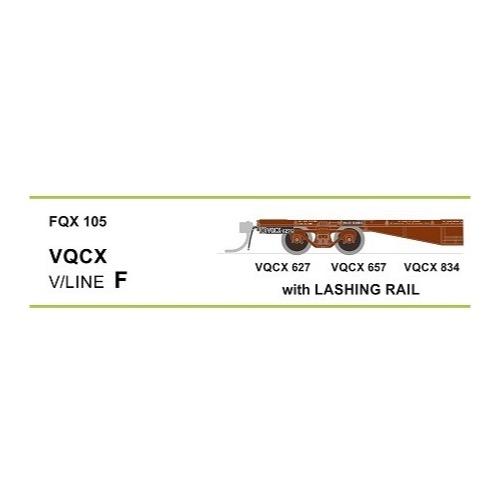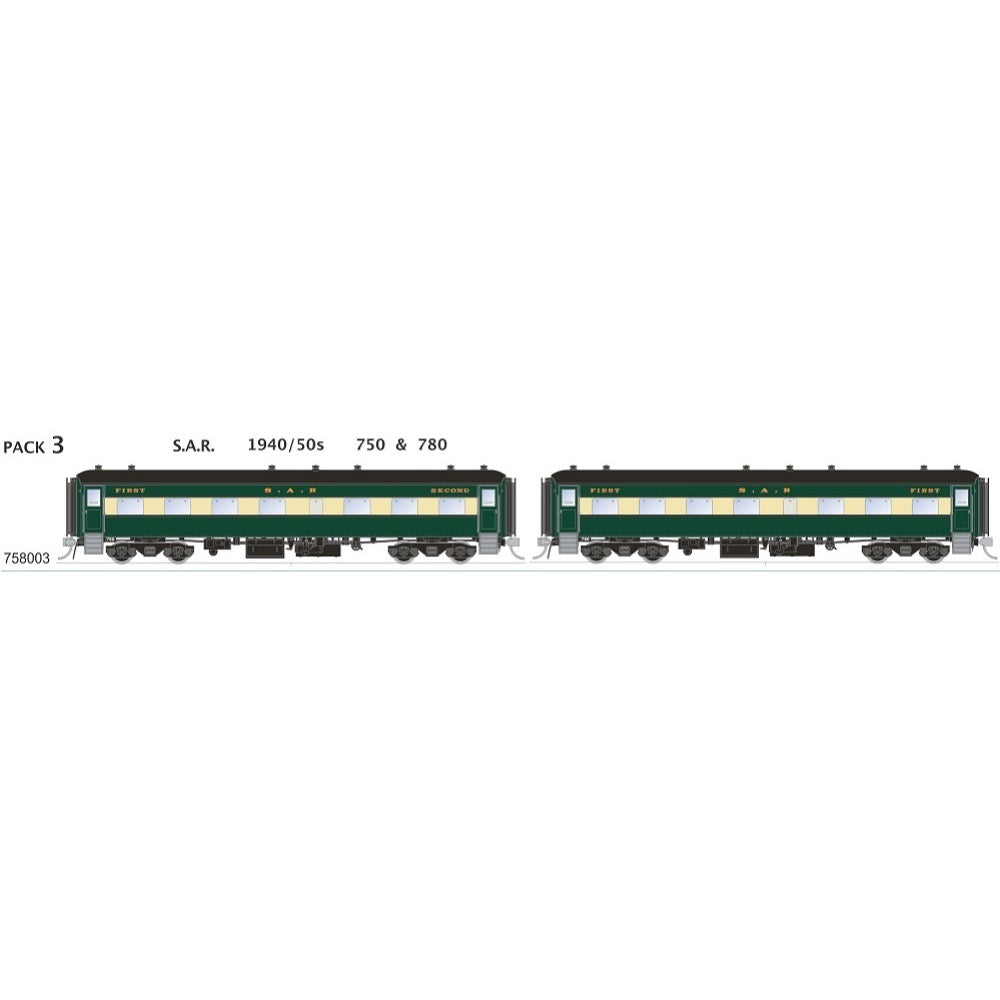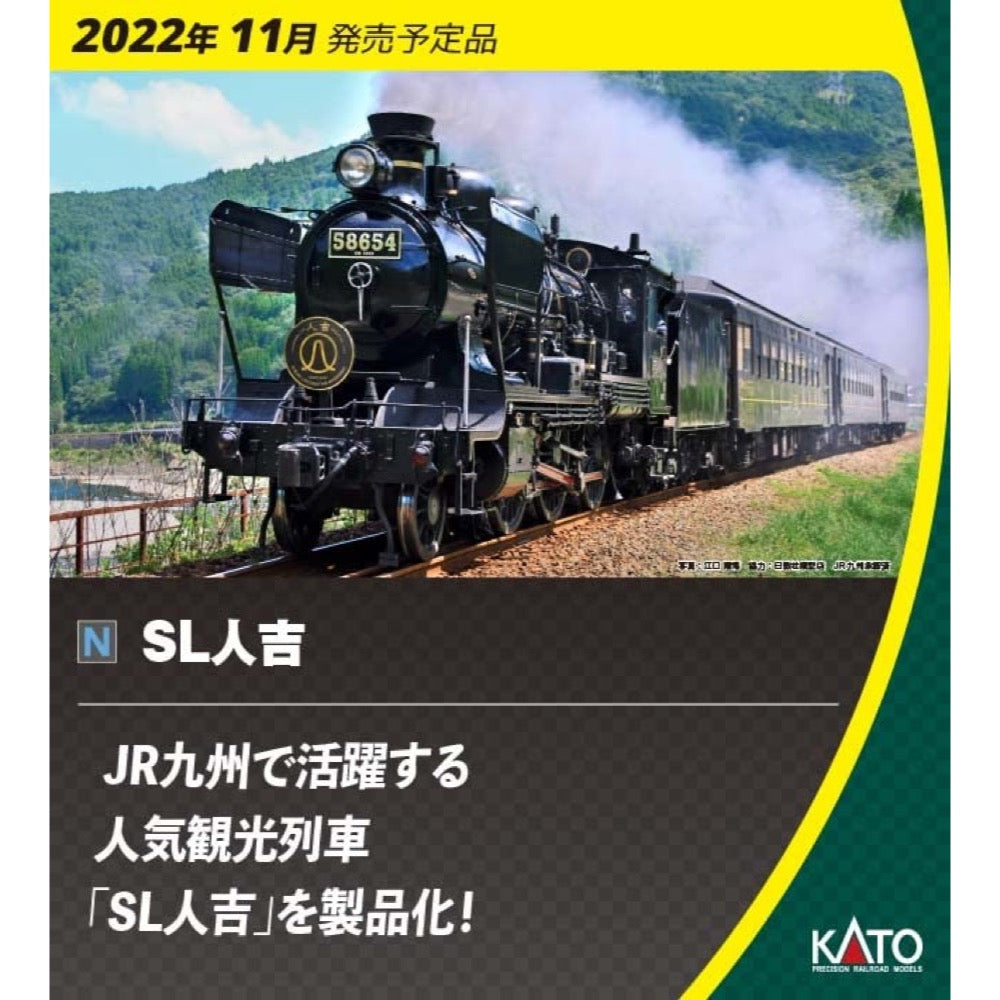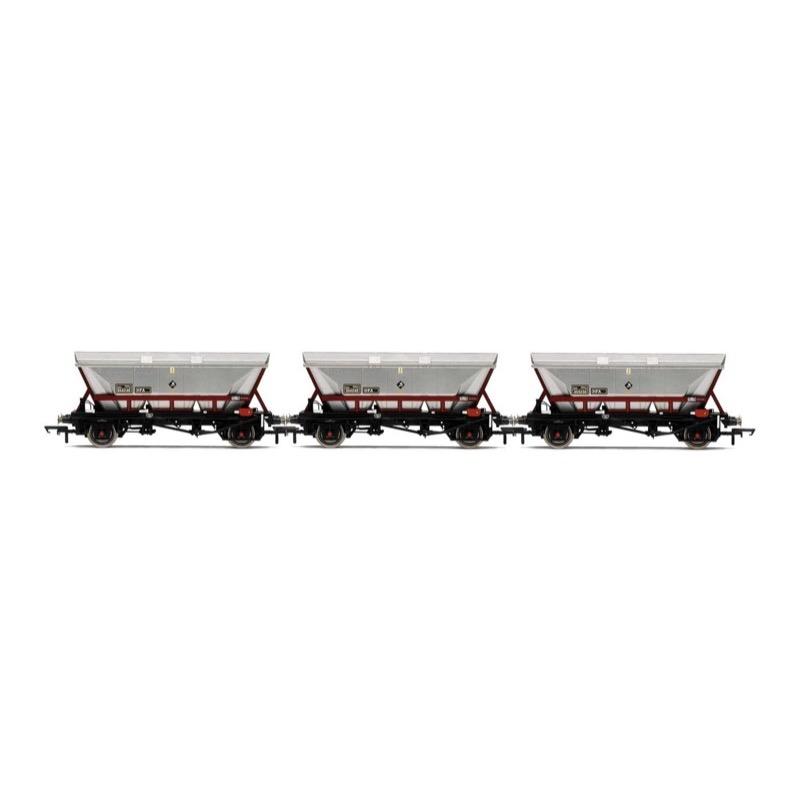
Hornby R60069 OO HFA Hopper Wagons Three Pack EWS
71.00
$
<p>Built from 1964 to 1977, HAA wagons were built as method to move coal more efficiently, particularly with the aim of improving to supply of coal to power stations. It was intended that trains of these wagons could run in a continuous loop from the colliery to the power station and back, with machinery I place to allow loading and unloading at slow speeds. In reality it was often the case that the infrastructure to allow this type of running did not exist, particularly at the collieries, but nonetheless these wagons greatly improved coal transfer. With the decline of Britain's coal industry these previously extremely common wagons have now become extremely rare with most having been either scrapped or rebuilt as another form of wagon. Based upon the successful HAA wagon, the HFA design added an aerodynamic canopy designed to stop coal-dust from escaping. Wagons included in this pack: EWS HFA 354248; EWS HFA 354249; EWS HFA 354250.</p>
<h3>Specifications</h3>
<ul>
<li>Item Length - Without Packaging (cm): 4.5</li>
<li>Item Height - Without Packaging (cm): 9</li>
<li>Item Width - Without Packaging (cm): 15.6</li>
<li>Item Weight - Without Packaging: 0.09</li>
<li>Item Scale: 1:76 Scale 00 Gauge</li>
<li>License: No</li>
<li>Finish: Painted</li>
<li>Colour: Silver</li>
<li>Gauge: OO</li>
<li>Operator: EWS</li>
<li>Livery: EWS Silver</li>
<li>Minimum Curve (mm): Radius 2</li>
<li>Number of Parts: 3</li>
</ul>
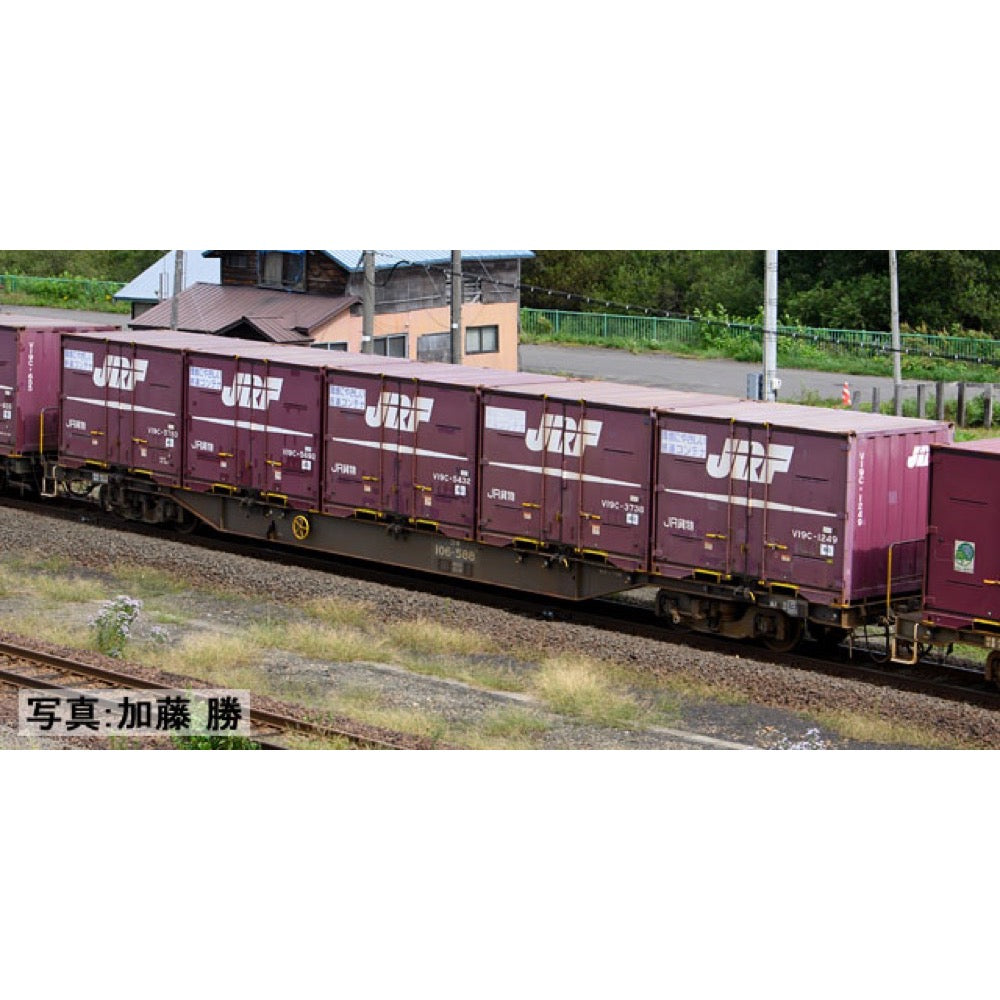
Tomix 96743 HO HO-743 KOKI 106 New Deco W/O Container
17.00
$
<p>The Koki 106 series is a marine container-compatible vehicle manufactured since 1997.</p>
<p>When it was introduced, the body color was blue, but from the vehicles manufactured in 1999, the body color became gray, and the blue vehicles were gradually changed to gray.</p>
<p>In recent years, the "JRF" mark and "No Push-Off" markings on the sides have been omitted.</p>
<h3>Features</h3>
<ul>
<li>Reproduces the newly painted Koki 106 type</li>
<li>Reproduces the appearance without the hand brake release indicator on the side of the car body</li>
<li>Various markings are printed</li>
<li>Handrails and handlebars are already installed</li>
<li>Reflector parts and container mounting claw parts are included</li>
<li>Car number and no-thrust notation are selectable and transfer sheets are included</li>
</ul>
<h3>Accessories</h3>
<ul>
<li>Runner parts: Container mounting claw A</li>
<li>Runner parts: Container mounting claw B</li>
<li>Runner parts: Container mounting claw C</li>
<li>Runner parts: Reflector</li>
<li>Parts: Claw removal jig</li>
<li>Transfer sheet: Vehicle number, etc.</li>
</ul>
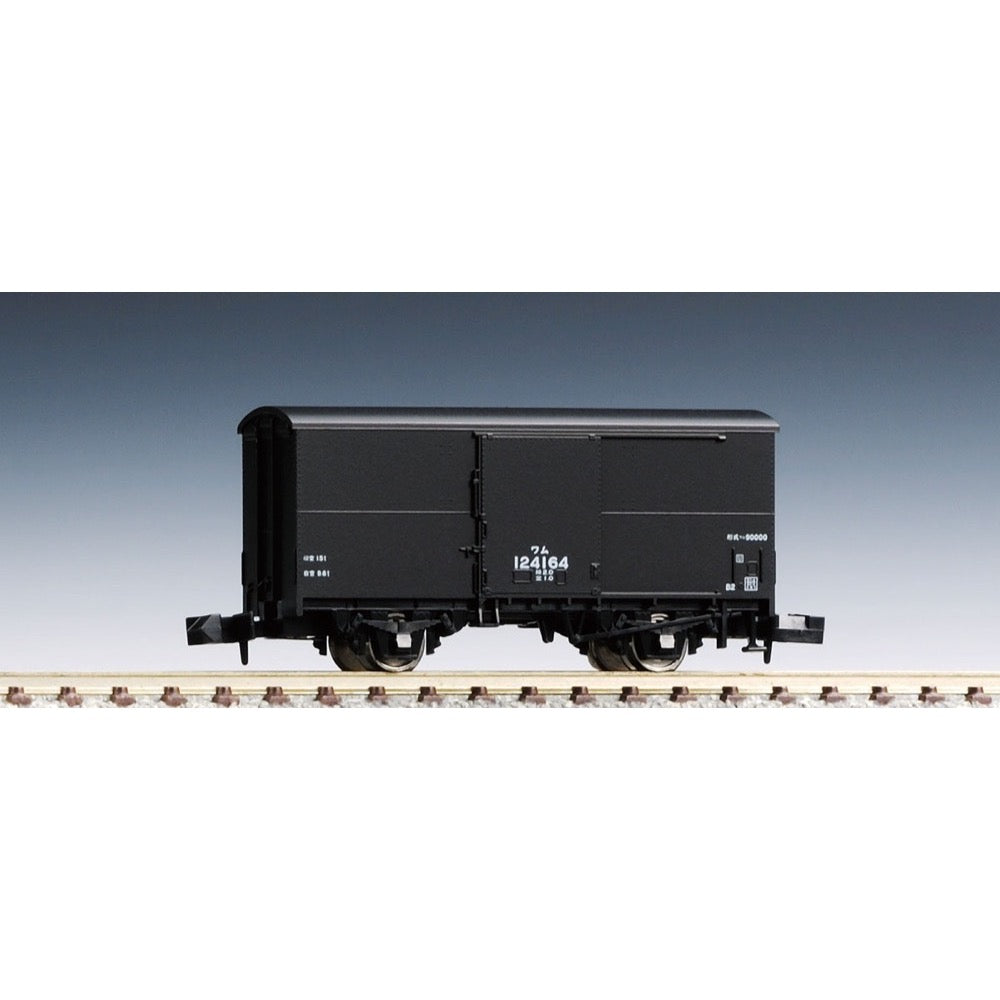
Tomix 2728 N WAM 90000 (without door rib)
5.00
$
<p>Introduced in 1953 with a two-stage link structure, rather than the single-stage link structure of the WAM23000, this is a representative two-axle covered freight car alongside the WAM80000 and WARA1.</p>
<p>Some pre-war WAM23000 cars had no ribs on the side doors, and even after being converted to the WAM90000, the ribless doors remained.</p>
<h3>Features</h3>
<ul>
<li>The WAM90000 series, which has no ribs on the side doors, is reproduced using a separate mold</li>
<li>The underfloor is filled with detail thanks to the brake lever and step reproduction</li>
<li>Various white markings are printed on the black exterior</li>
<li>Car number is printed</li>
<li>Silver wheels are used</li>
<li>Can pass through mini curves (when connected to a locomotive capable of passing through mini curves)</li>
</ul>
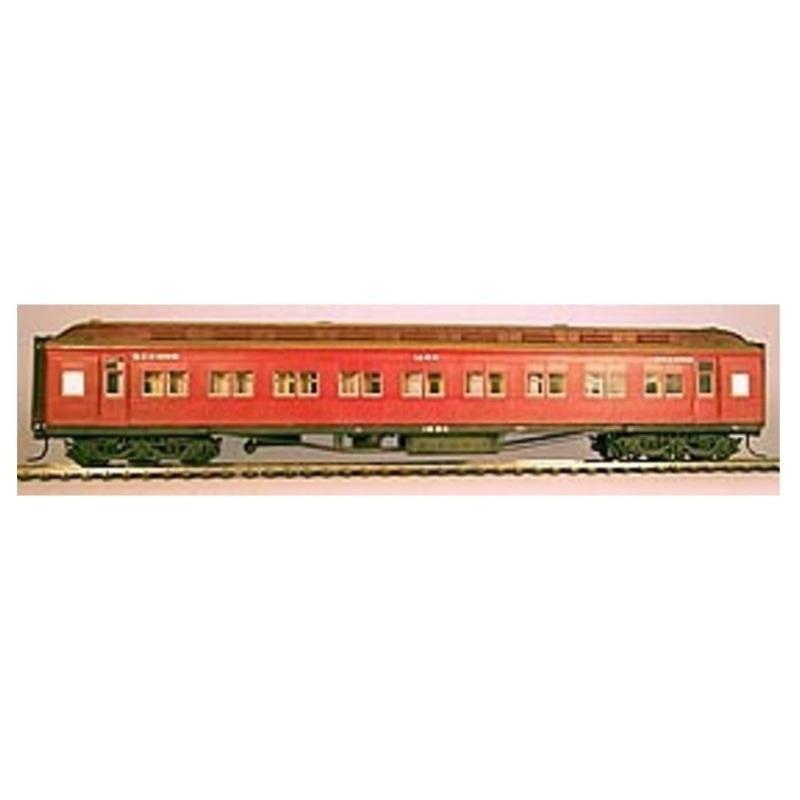
Steam Era Models R21 HO BE Second Class Passenger Car Kit
25.00
$
<h3>BE Second Class Passenger Car Kit</h3>
<p>The 71' clerestory roofed 'E' class passenger cars were introduced into service between 1906 and 1910. AE first class cars numbers 1 - 38 and BE second class cars numbers 1 - 39 were used on the Sydney and Adelaide expresses and, together with the 'W' cars, provided the backbone of the V.R. passenger stock for many years.</p>
<p>This kit consists of injection moulded 'W' class passenger car components and supplementary details. Because of differences in compartment sizes between AE and AW cars and between BE and BW cars, there are some compromises, but each coach is within 2% of the correct length so the difference is not too apparent. Because the sides, roof and floor need to be cut and spliced, some experience in "kit bashing" would be helpful.</p>
<p>AE numbers 1,3,12 and 36, as well as BE numbers 4, 19, 31 and 34 were airconditioned in 1935/36 which altered their appearance considerably. Furthermore, AE cars 21, 26 and 34 were rebuilt into buffet cars Kiewa, Moyne and Taggerty respectively. Kiewa and Moyne were subsequently further modified to become 1 and 2 BG. AE cars rode on 4 wheel "Spirit of Progress" bogies from 1962 on.</p>
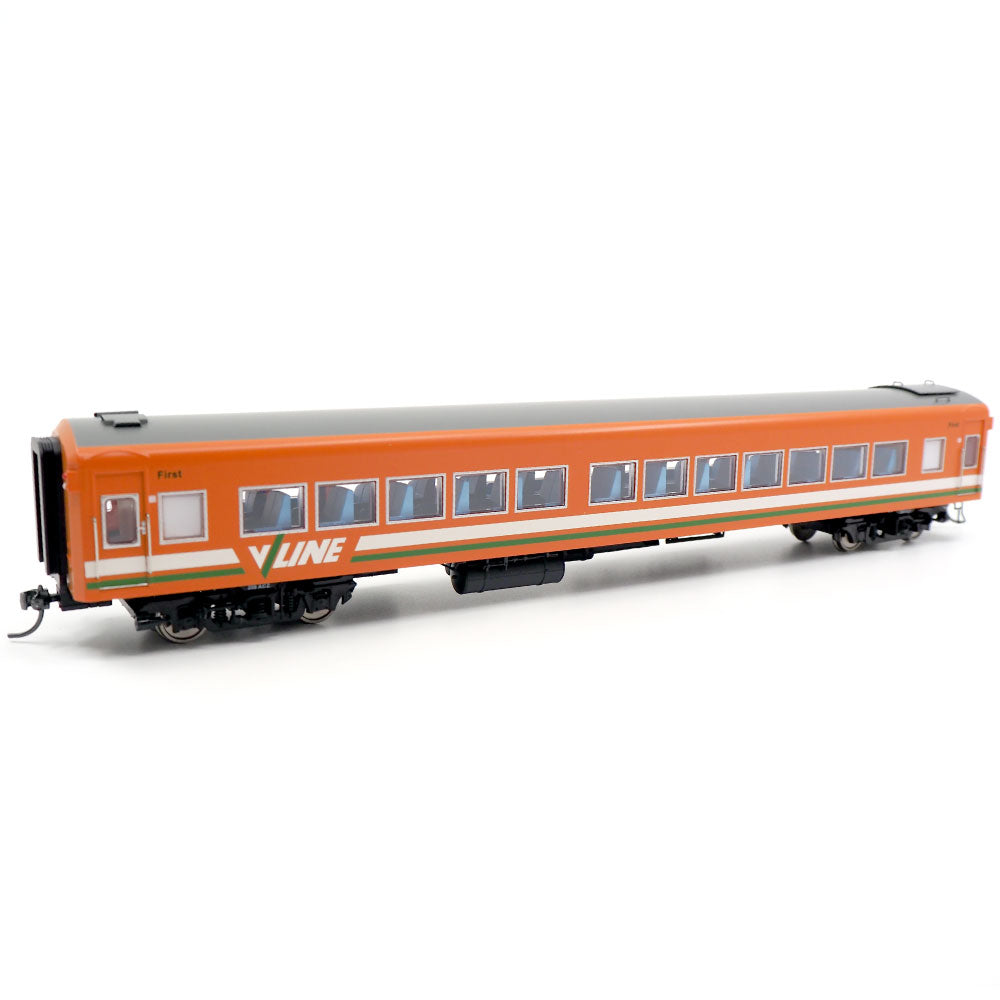
Powerline PC-515B HO ACZ 256 V/Line White & Green Stripe Z Type Carriage
69.00
$
<h3>ACZ 256 V/Line White & Green Stripe Z Type Carriage</h3>
<p>The Z type carriages are an air conditioned steel passenger carriage used on the railways of Victoria, Australia. The carriages were constructed by the Victorian Railways from 1957 for use on intrastate services. For most of their service, the Z cars operated as Z sets, however, in the early 1990s most sets were broken up, with carriages merged into N sets. They thus currently run on mixed service with Z sets.</p>
<ul>
<li>Highly detailed</li>
<li>Plastic, resin, and etch metal components</li>
<li>HO Scale</li>
<li>Z-Type Carriage</li>
</ul>
<p><em>ACZ 259 Displayed for illustration</em></p>
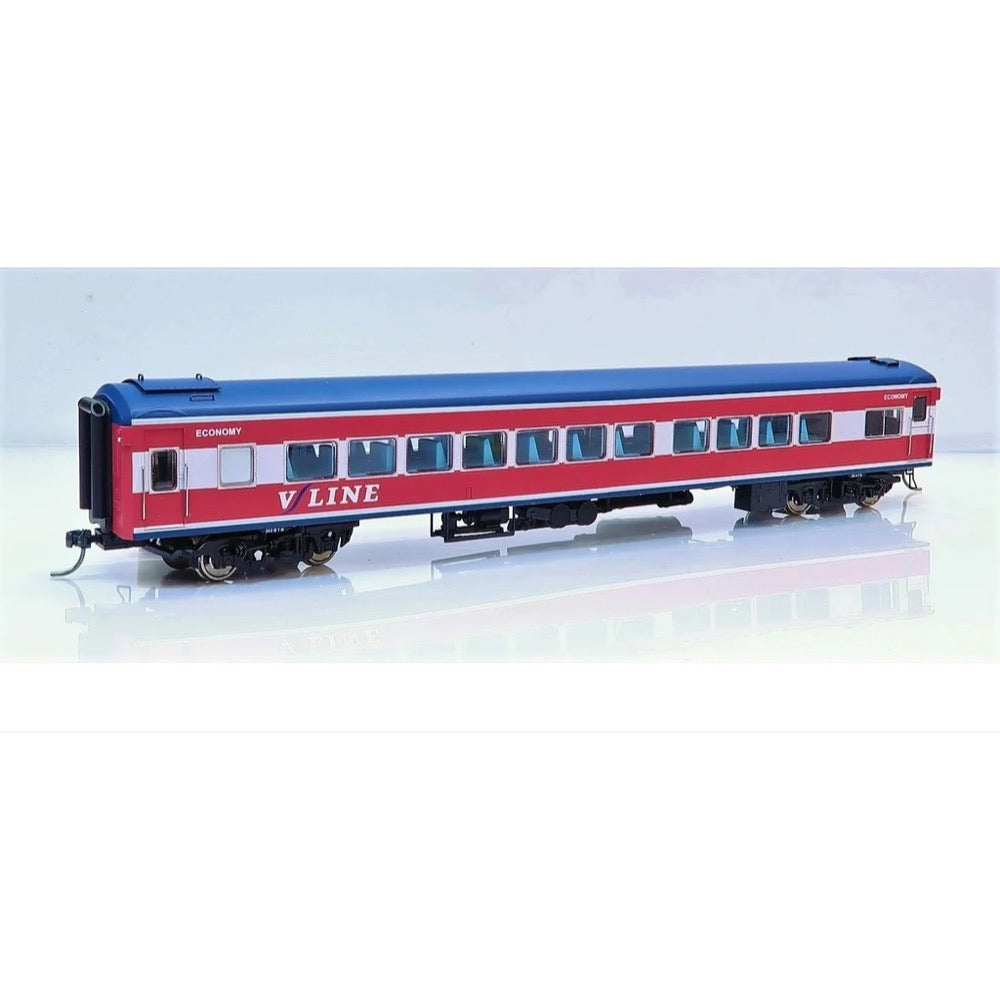
Powerline PC-526A HO BTN 263 V/Line Maroon/White/Blue Z Type Carriage
69.00
$
<h3>HO BTN 263 V/Line Maroon/White/Blue Z Type Carriage</h3>
<p>The Z type carriages are an air conditioned steel passenger carriage used on the railways of Victoria, Australia. The carriages were constructed by the Victorian Railways from 1957 for use on intrastate services. For most of their service, the Z cars operated as Z sets, however, in the early 1990s most sets were broken up, with carriages merged into N sets. They thus currently run on mixed service with Z sets.</p>
<ul>
<li>Highly detailed</li>
<li>Plastic, resin, and etch metal components</li>
<li>HO Scale</li>
<li>Z-Type Carriage</li>
</ul>
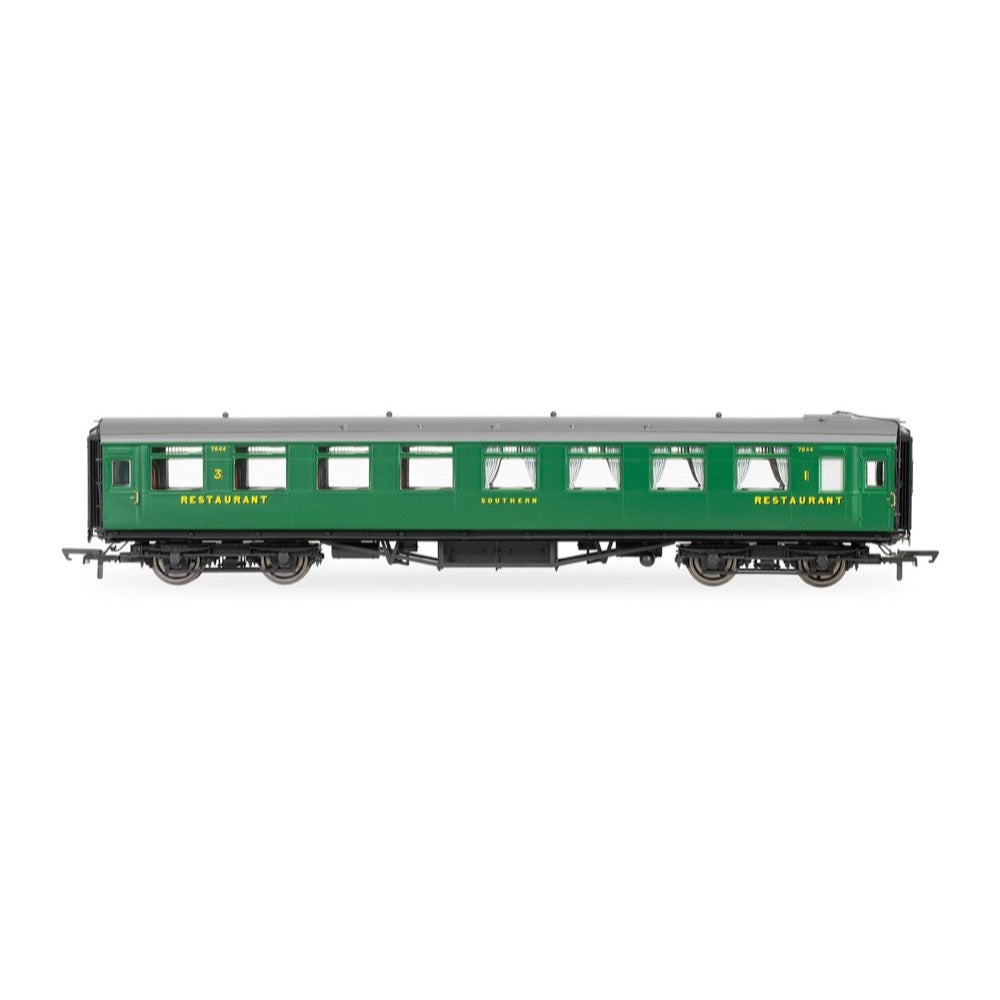
Hornby R40221 OO SR Maunsell Dining Saloon Comp 7844
37.00
$
<p>Maunsell's diagram 2652 Third Class Dining Saloons were built in 1927 to provide an area for Third Class passengers to make use of the kitchen services provided in First Class Dining Coaches, each coach accommodating 64 diners and two toilets located at the end of the Coach.</p><h3>Specifications</h3><ul>
<li>Item Length - Without Packaging (cm): 24.3</li>
<li>Item Height - Without Packaging (cm): 5</li>
<li>Item Width - Without Packaging (cm): 3.5</li>
<li>Item Weight - Without Packaging: 0.13</li>
<li>Item Scale: 1:76 Scale 00 Gauge</li>
<li>Finish: Painted</li>
<li>Colour: Green</li>
<li>Operator: BR</li>
<li>Designer: Maunsell</li>
<li>Livery: Maunsell BR (SR) Green</li>
<li>Minimum Curve (mm): Radius 2</li>
<li>Number of Parts: 1</li>
</ul>
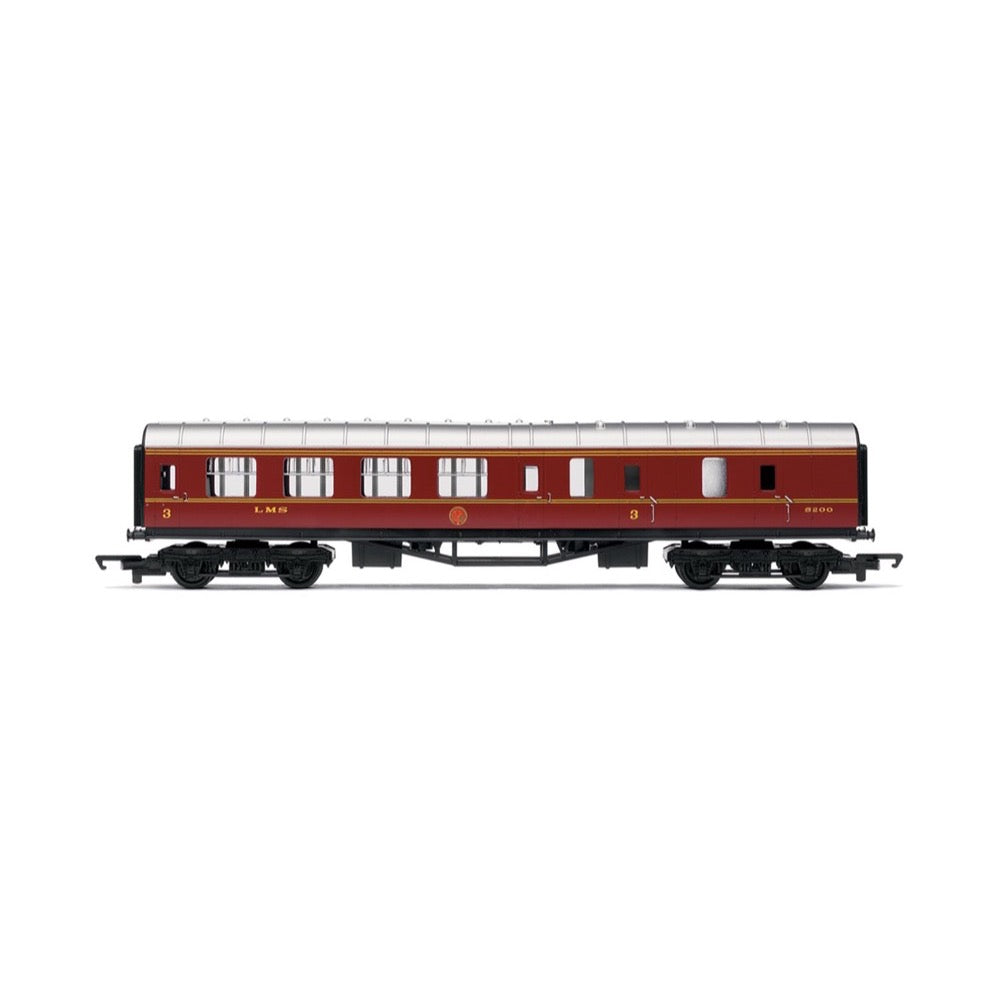
Hornby R4389 Railroad OO LMS Brake Coach
31.00
$
<p>Young or old, keen modeler or just a beginner, the Hornby RailRoad range answers the needs of many and is a perfect complement to the variety of locomotives, rolling stock, track, buildings, and accessories that can be found in the current Hornby catalogue. Devoid of easily damaged detail parts, the suitably livered RailRoad locomotives are fitted with efficient drive mechanisms and have pickups on all drive wheels ensuring smooth running. All the RailRoad models are fitted with the standard Hornby hook and bar type couplings and will therefore easily couple to those locomotives and rolling stock in both the standard Hornby and Thomas & Friends ranges. With this in mind it is easy to see that those models that make up the Hornby RailRoad range are a simple and cost effective way of adding to a train set, providing a suitable and most appropriate stepping stone into the varied and fascinating World of model railways. The introductory range offers not only a selection of individual locomotives, rolling stock and accessories but an assortment of train and wagon packs ideally suited for either train set rolling stock enhancements or for those who wish to experiment and try their hands at developing their modelling techniques!</p>
<h3>Specifications</h3>
<ul>
<li>Item Length - Without Packaging (cm): 24.2</li>
<li>Item Height - Without Packaging (cm): 5</li>
<li>Item Width - Without Packaging (cm): 3.5</li>
<li>Item Weight - Without Packaging: 0.13</li>
<li>Item Scale: 1:76 Scale 00 Gauge</li>
<li>License: No</li>
<li>Finish: Painted</li>
<li>Colour: Red</li>
<li>Gauge: OO</li>
<li>Operator: LMS</li>
<li>Designer: Stanier</li>
<li>Livery: Maroon</li>
<li>Minimum Curve (mm): Radius 2</li>
<li>Number of Parts: 1</li>
</ul>
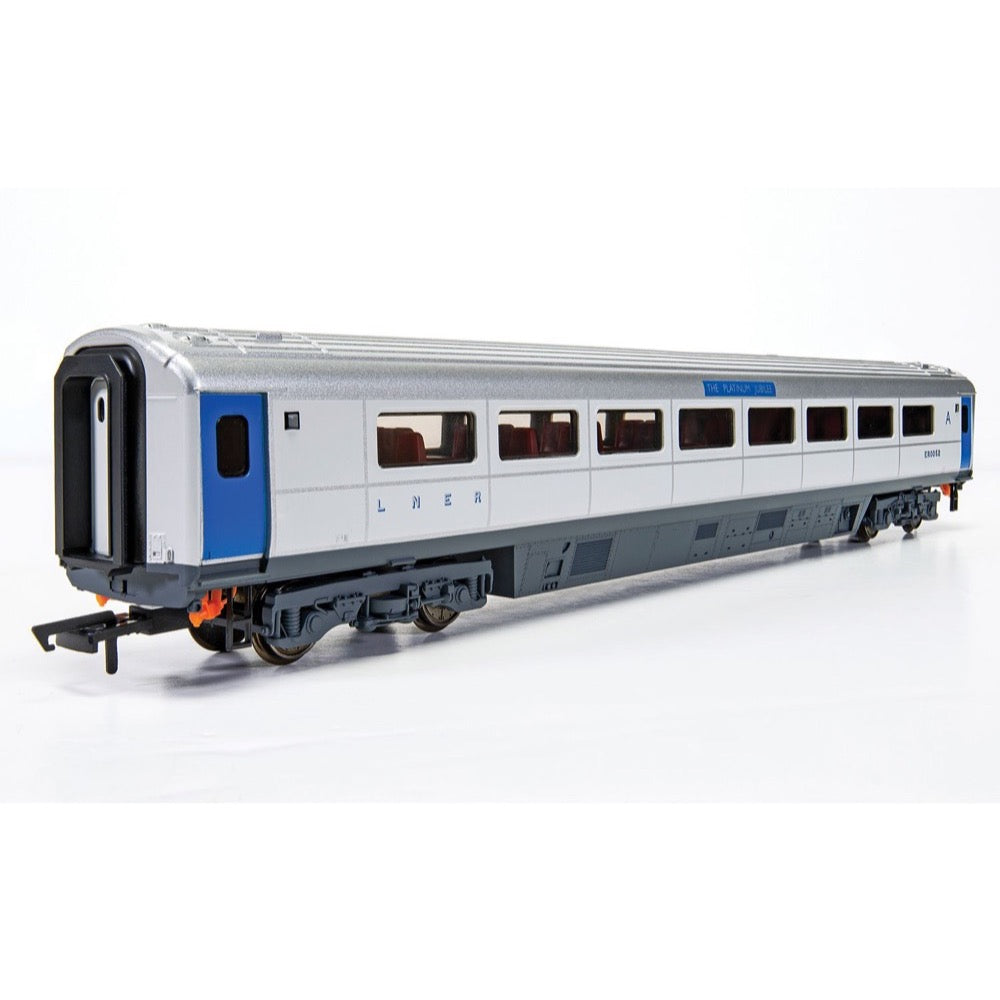
Hornby R40356 OO Platinum Jubilee of HM Queen Elizabeth II Mk3 Sliding Door Trailer Composite Catering ER0052
40.00
$
<p>Running with the Platinum Jubilee HST units, this coach reimagines what the ageing Mk3 coaches may have looked like in this celebratory Platinum Jubilee year under the old LNER. Full trains of these could have been used to commemorate such an occasion had nationalisation simply not happened. In a Platinum Jubilee silver with blue trim livery with re-purposed destination boards, the six First Class and two First Class Restaurant sliding door Mk3 coaches would indeed make a never to be forgotten image while being pulled along the East Coast Main Line at high speed. The sleek lines combined with more than a salute to the art deco style of the 1937 ‘Coronation’ train, plus the wonderful opulence and style such a service offered, brings fanciful imaginings into reality, if only in model form. This coach is numbered ER0052, in celebration of the Queen’s coronation year in 1952.</p>


